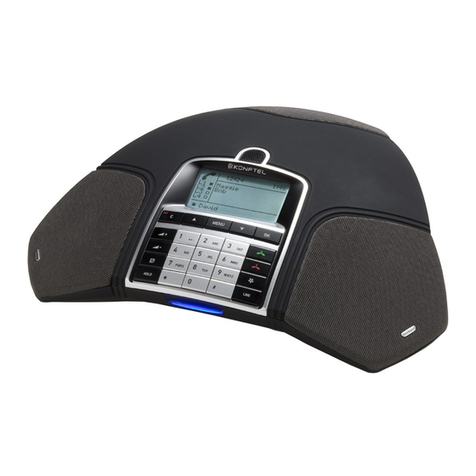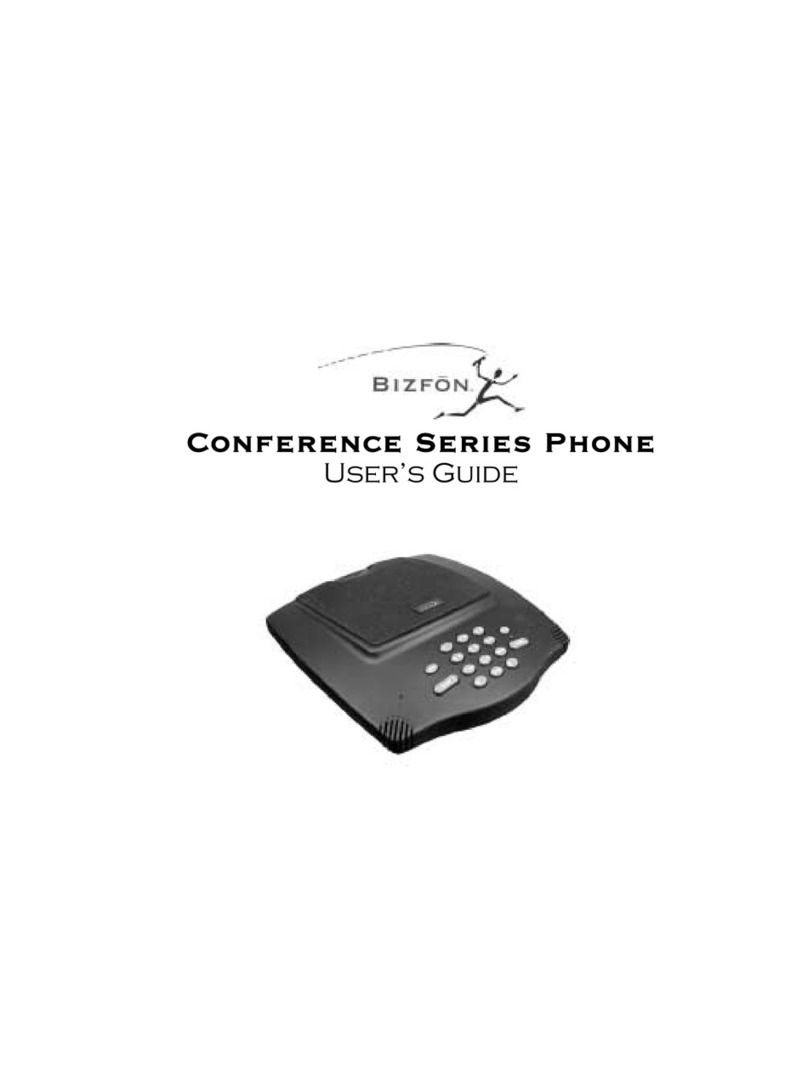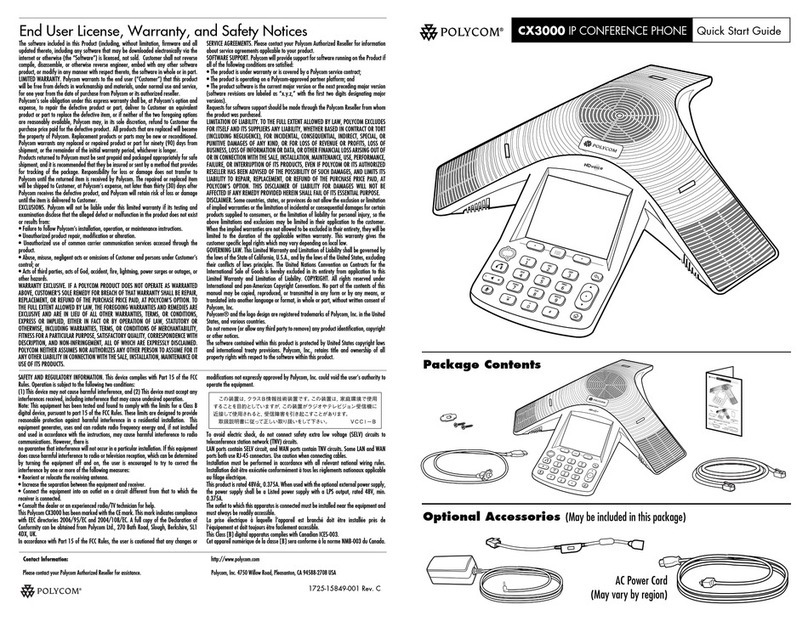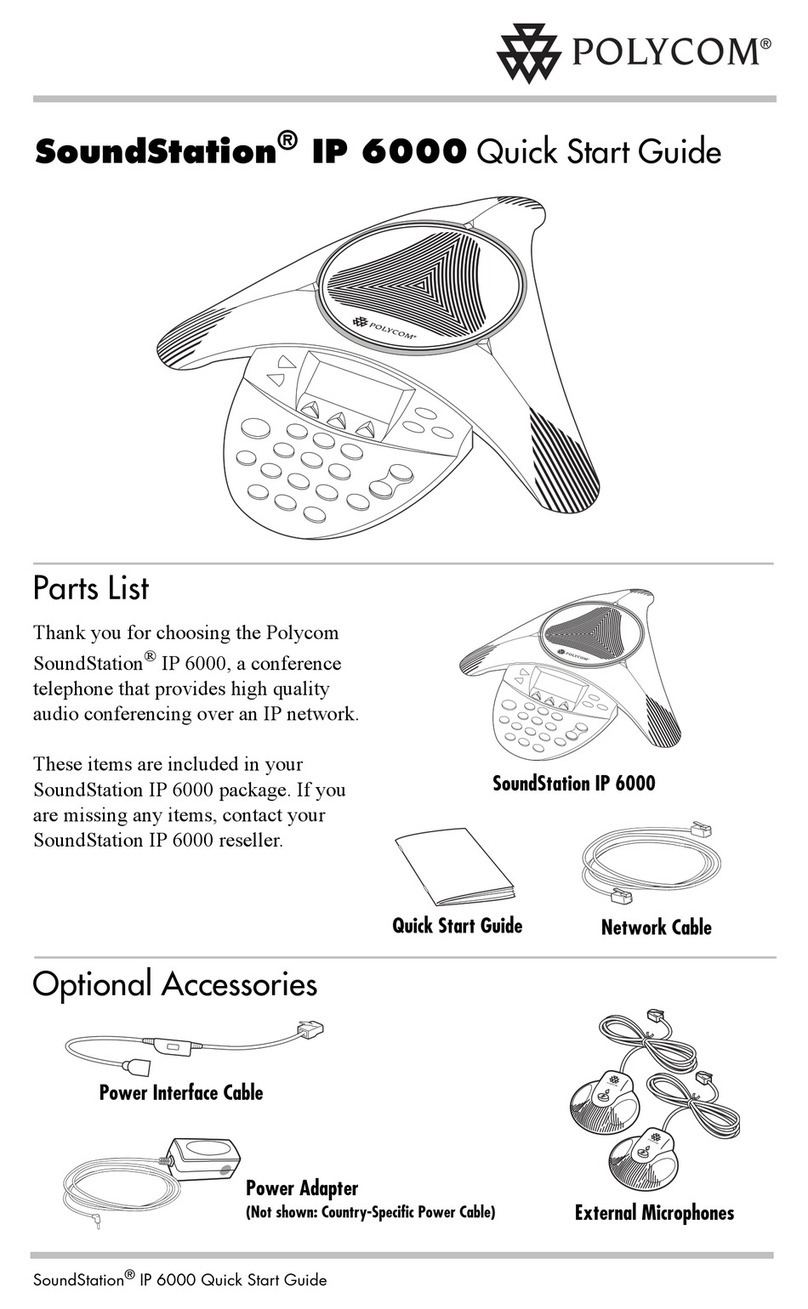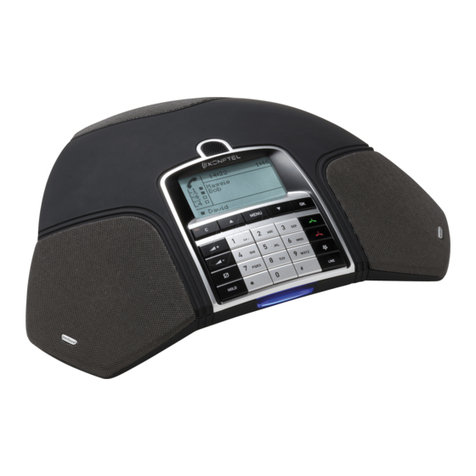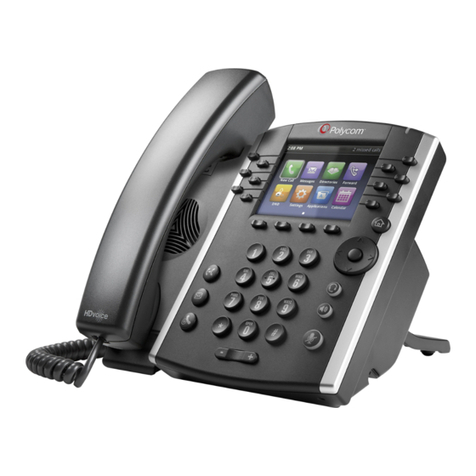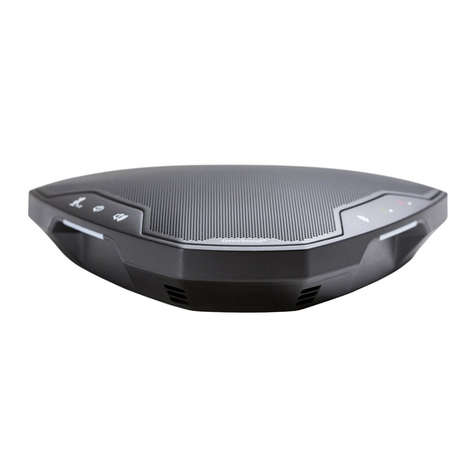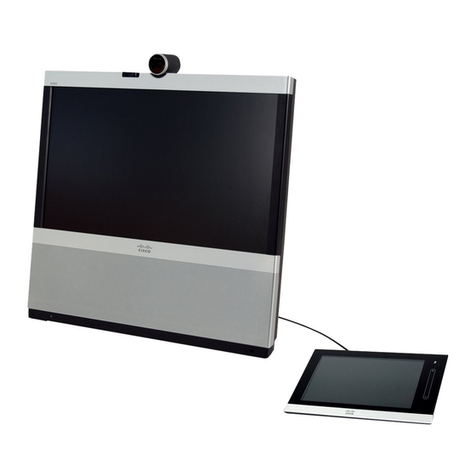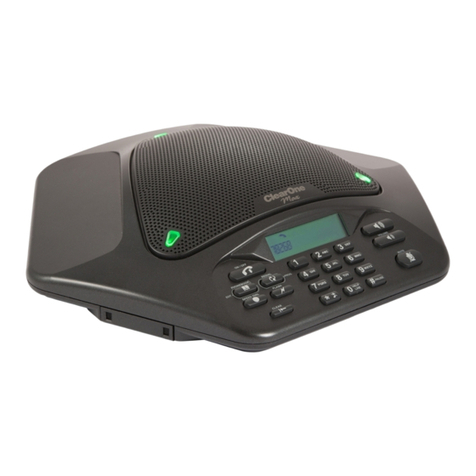Bosch Carephone 50 ISA-50-MS Owner's manual

Carephone 50
ISA-50-MS
en User and Programming Manual


Carephone 50 Table of Contents | en 3
Bosch Security Systems User Manual ISA-50-MS V2 I 2008.02
Table of Contents
1SafetyNotes 5
2Features 6
3 Scope of Delivery 7
4 Unit Description 8
5 Functions 8
5.1 Emergency Call Button 8
5.2 S Button 9
5.3 RF Transmitter 10
6 Taking Phone Calls 11
7 Emergency Call to a Call Centre 12
8 Emergency Call to a Private Phone 12
9 Cleaning 14
10 Device Acknowledgements 15
10.1 Light Signals 15
10.2 Voice Messages of the HTS50 16
11 Installation 18
11.1 Placing the HTS50 18
11.2 Connecting the HTS50 20
11.3 Connection Configuration 22
11.4 De-installation 23

4en | Table of Contents Carephone 50
ISA-50-MS V2 I 2008.02 User Manual Bosch Security Systems
12 Programming 24
12.1 Programming Methods 24
12.2 Programming in Steps 25
12.3 Opening the Unit 26
12.4 Key Functions During Programming 26
12.5 Programming Procedure 27
12.6 The Main Programming Steps 28
12.7 Resetting the HTS50 to its factory defaults 36
13 Maintenance 36
14 Conformity 36
15 Replacing the Backup Battery 37
16 Battery Disposal 38
17 Technical Specifications 39
18 Appendix 41
18.1 Drilling Template 41
18.2 Programming Tables 42

Carephone 50 Safety Notes | en 5
Bosch Security Systems User Manual ISA-50-MS V2 I 2008.02
1SafetyNotes
XChoose a non-slip surface on which to install the
Carephone 50 (HTS50).
XDo not install the unit near a central heating radiator. Do
not expose the unit to direct sunlight.
XDo not attempt to open the unit or the power adapter. For
repairs, contact your Bosch dealer.
XWhen unplugging the unit from the power outlet, never pull
on the power cord but always grip the power adapter.
XNever touch the power adapter with wet hands.
XThe backup battery has a limited operating life and should
be replaced after approximately 3 years. Use original parts
only.
XElectrolytes or gases may be emitted from the battery
should it leak under exceptional circumstances. If this
happens, deactivate the unit by isolating it from the phone
network and power supply. Battery replacement must be
carried out by trained service personnel only.
XThe manufacturer can accept no liability for damage
resulting from the improper use of the unit.
XDo not install any DECT telephones in the immediate
vicinity of the HTS50.
!
CAUTION! Read through the user manual carefully before using
the unit for the first time. It contains important information
about the connection, use and safety of the unit.

6en | Features Carephone 50
ISA-50-MS V2 I 2008.02 User Manual Bosch Security Systems
2 Features
The Carephone HTS50 is used to transmit emergency calls over
the telephone network.
The person requiring emergency assistance activates a call by
pressing a button on the HTS50 or by using an RF transmitter.
This action establishes a telephone connection between the
person requiring assistance and the emergency call recipient,
enabling information to be exchanged and emergency
assistance measures to be initiated.
In addition, the HTS50 can be used to report an emergency
(when used in conjunction with a fire detector, for example).
The device has two basic operating modes:
1. The HTS50 forms part of a social alarm system that
consists of a call centre that can be reached at any time
using the Carephone. Emergency calls are sent to this call
centre.
2. The unit is operated as an individual phone. Emergency
calls are sent to private phones.
The HTS50 can be connected to up to 10 RF detectors.
The unit can also be programmed to initiate service calls
(e.g. "meals on wheels") at the touch of a button.

Carephone 50 Scope of Delivery | en 7
Bosch Security Systems User Manual ISA-50-MS V2 I 2008.02
3 Scope of Delivery
1. HTS50
2. RF transmitter
3. Power adapter
4. Telephone cord
5. Getting started guide
6. Quick programming guide
7. User and programming manual

8en | Unit Description Carephone 50
ISA-50-MS V2 I 2008.02 User Manual Bosch Security Systems
4 Unit Description
1. Window
2. Grey S button
3. Red emergency call button
5Functions
5.1 Emergency Call Button
The emergency call button on the HTS50 is used to initiate an
emergency call. If you require help,
Xpress the emergency call button.
The call will be answered either by a person at the social alarm
monitoring centre or the private individual who takes the
emergency call.

Carephone 50 Functions | en 9
Bosch Security Systems User Manual ISA-50-MS V2 I 2008.02
5.2 S Button
Cancel emergency call
You can use the grey S button to cancel an emergency call,
e.g. if you have pressed the emergency call button by mistake.
To cancel an emergency call,
Xpress the S button until the unit announces stop.
To stop false alarms and emergency calls being made by
mistake, the HTS50 has a pre-alarm.
The pre-alarm is the waiting time which elapses after the alarm
button is pressed and during which the alarm is transmitted.
The time in which the pre-alarm can be cancelled (pre-alarm
time) can be programmed to suit your individual requirements.
The emergency call cannot be cancelled once the pre-alarm
time has expired.
Service call
The S button can also be programmed as a service button.
If you press the button and hold it (for at least 2 seconds), the
unit dials a call number that has been programmed for the
service call, e.g. "meals on wheels".
When this function is activated,
Xpress the S button until you hear the announcement
service call.
The service call number is dialled.

10 en | Functions Carephone 50
ISA-50-MS V2 I 2008.02 User Manual Bosch Security Systems
Unit status
The S button lights up if there is a fault. To check the unit's
status,
Xpress the S button for at least 2 seconds.
The unit's status is announced.
5.3 RF Transmitter
The RF transmitter that is supplied with the HTS50 is used to
make emergency calls. It allows you to move around your home
freely within radio range, without having to sacrifice your safety
and security.
XAlways carry the RF transmitter around with you whenever
you are home.
To make an emergency call using the RF transmitter,
Xpress the button on the RF transmitter.
The indicator light lights up once as confirmation.
The HTS50 sounds the announcement radio button and the
emergency call is sent.
The call will be answered either by a person at the social alarm
monitoring centre or by a private individual who takes the
emergency call.
An emergency call made in error can be cancelled during the
pre-alarm by pressing the S button on the HTS50, see
Section 5.2 S Button, Page 9.
!
CAUTION! The radio range between the RF transmitter and the
HTS50 depends largely on the environment in which the
devices are used. Test the range within your own home
environment!

Carephone 50 Taking Phone Calls | en 11
Bosch Security Systems User Manual ISA-50-MS V2 I 2008.02
6 Taking Phone Calls
The HTS50 can be programmed so that you can take phone
calls using the emergency call button on the unit or using the
RF transmitter. You can speak from anywhere in the room as
the HTS has a hands-free function.
Taking phone calls with the HTS50
To take a phone call with the HTS50,
Xpress the emergency call button when the phone rings.
To terminate the call,
Xpress the emergency call button again.
Taking phone calls with the RF transmitter
To take a phone call with the RF transmitter,
Xpress your RF transmitter when the phone rings.
To terminate the call,
Xpress your RF transmitter again.

12 en | Emergency Call to a Call Centre Carephone 50
ISA-50-MS V2 I 2008.02 User Manual Bosch Security Systems
7 Emergency Call to a Call Centre
If you initiate an emergency call with your HTS50, it will usually
be forwarded to a social alarm call centre where it will be
processed.
How the emergency call is processed at the call centre
1. You send an emergency call using the HTS50 or the
RF transmitter.
2. The emergency call is transmitted.
3. An operator at the call centre takes your emergency call.
4. You speak to the operator.
5. The controller arranges for assistance to be dispatched
depending on the circumstances.
6. Wait until assistance arrives.
8 Emergency Call to a Private Phone
The HTS50 can be programmed to send an emergency call to a
private phone belonging to an individual such as a relative.
The emergency call from the HTS50 is received just like a
normal phone call.
How the emergency call is received on a private phone
1. You send an emergency call using the HTS50 or the RF
transmitter.
2. The emergency call is transmitted.
3. The phone of the person to whom the emergency call is
being sent rings.
4. The receiver must be picked up.
5. The HTS50 responds immediately with the announcement
call,call to the person rendering assistance.
6. This is followed by an announcement telling the person
about how the emergency call was made, e.g. with the
emergency call button or RF detector, and who made it.
7. The announcement can be repeated as often as required
by pressing the 2key on the phone.

Carephone 50 Emergency Call to a Private Phone | en 13
Bosch Security Systems User Manual ISA-50-MS V2 I 2008.02
8. When the announcement ends, a speak/listening
connection in hands-free mode is set up between the
person calling for assistance and the person responding to
the call.
9. The call remains connected for approx. 3 minutes. Three
tones sound when the time has expired. There are two
options:
10. The emergency call can be terminated at any time by
pressing the 0key.
11. The call can be extended by a further 3 minutes by
pressing the 1key. The call can be extended as often as
required in this way. The call is terminated by pressing the
0key.
i
NOTE! Instead of the unit ID, a personal message can be
recorded, e.g. This is Mrs Brown's emergency call unit..., see
Section 12.6 The Main Programming Steps, Page 28.
!
CAUTION! If you do not terminate an emergency call when
prompted to do so in the announcement by pressing the 0key,
or if you do not extend the call by pressing 1at the right time,
the call will not be properly processed. The HTS50 will
automatically dial the next emergency call number when the
existing emergency call has been cancelled.

14 en | Cleaning Carephone 50
ISA-50-MS V2 I 2008.02 User Manual Bosch Security Systems
Key functions on the destination phone
The following list shows the other key functions on your phone
that can be used for an emergency call from the HTS50.
9Cleaning
– Regularly clean the surface of the HTS50 with a soft cloth.
If required, dampen the cloth lightly with a pH-neutral
cleaning product.
– Do not spray cleaning product onto the unit housing. The
surface of the housing can be damaged or destroyed by
abrasive products or products containing alcohol or
solvents.
– Never use: alcohol, cleaning products containing alcohol or
vinegar, cleaning products for glass or plastics,
disinfectants except Incidur®, methylated spirits,
petroleum ether, other aggressive agents.
– If necessary, remove the top cover of the HTS50 and clean
the spaces in between the buttons. The buttons can be
detached by applying light pressure.
Key Function
0 Terminate call with confirmation
1 Extend call by another 3 minutes
2 Repeat alarm message
3 Speak with normal volume to the HTS50
4 Listen to the HTS
5 Increase the volume at the HTS50 and speak to the HTS50
6 Reduce the volume at the HTS50 and speak to the HTS50
7 Full-duplex voice
8 Press 0 to acknowledge a repeated emergency call.
9 Reject and terminate call.
HTS50 dials the next number on the list.

Carephone 50 Device Acknowledgements | en 15
Bosch Security Systems User Manual ISA-50-MS V2 I 2008.02
10 Device Acknowledgements
10.1 Light Signals
The HTS50 has two indicator lights that display the status of
the unit.
The meaning of the light signals is explained in the table below:
Light signal Meaning
Lamp shines bright/dull
Lamp flashes
Status Description/Action Yellow Green Blue Red
Initialisation 2 sec. after power-on
or programming
Fault Fault message is
announced once. Press
the S button to repeat
(0.1s/2s)
Standby mode Unit is ready
Pre-alarm Cancel with stop
button
Connection Establish connection
Speak Display for the hearing-
impaired
(0.5s/0.5s)
Listen Listen (display for the
hearing-impaired)
(0.1s/2s)
Repeat emergency
call active
If the emergency call is
not acknowledged, a
new emergency call is
made to the centre
when the programmed
time elapses
(0.5s/0.5s)

16 en | Device Acknowledgements Carephone 50
ISA-50-MS V2 I 2008.02 User Manual Bosch Security Systems
10.2 Voice Messages of the HTS50
When button is pressed
What the HTS says Meaning
Alarm input When the external alarm input is activated.
RF transmitter [x] When an RF detector is pressed; x = 1-10.
Emergency call When the emergency call button is pressed.
Call activated Connection failed - unit calling again.
Service call When the S button is pressed, if it is
programmed as a service button.
Stop When the S button is pressed during the pre-
alarm. The emergency call is cancelled.

Carephone 50 Device Acknowledgements | en 17
Bosch Security Systems User Manual ISA-50-MS V2 I 2008.02
Error messages
What the HTS says Meaning
Power failure Power failure. The indicator lamp in the daily
button flashes.
Check the power connection of the HTS50.
Power restored When power is restored.
Unit battery empty The HTS backup battery no longer has its full
capacity. Contact the social alarm call centre or
customer service.
Line failure The connection to the telephone network has
been lost. Check the plug on the unit and the
telephone socket.
Transmission failure An activated emergency call cannot be sent
despite 15 repeated dialling attempts. Press the
S button to stop the error message
announcement. Contact the social alarm
monitoring centre service provider or customer
service.
Error zero one External signal detected
The indicator lamp in the daily button continues
to flash until the message has reached the
centre.
Failure two-X RF transmitter battery empty
(X is the transmitter number)
Failure three-X Radio link monitoring faulty. The indicator lamp
in the daily button continues to flash until the
message has reached the centre.
(X is the transmitter number)

18 en | Installation Carephone 50
ISA-50-MS V2 I 2008.02 User Manual Bosch Security Systems
11 Installation
– Only connect the HTS50 to a professionally installed 230 V
AC/50 Hz power outlet.
– Use only the original line power adapter. Any other power
adapter could damage your unit.
– Do not install in a wet or humid environment.
– Do not install on a soft surface as this may impair the voice
quality of the HTS.
– Do not install in the proximity of TV sets, large metal
objects, microwave appliances or radio telephones. This
will impair the reception of signals from the RF transmitter.
– Take care not to obstruct the microphone mounted on the
right-hand side of the unit.
11.1 Placing the HTS50
The HTS50 can be set up either on a level surface or mounted
on the wall.
Setting up
The HTS50 is designed for use in the home environment. Many
items of furniture are coated with a wide variety of paints,
varnishes and plastics, and are treated with different types of
care product. The feet of the HTS50 may leave marks on
furniture surfaces as a result of chemical processes. To avoid
this, place the unit on a non-slip surface.
Wall mounting
You can mount the HTS50 on the wall either using a wall
bracket that can be ordered as a special accessory, or you can
fix the unit directly to the wall without a bracket. The wall
bracket stabilises the HTS and makes installation easier.
!
CAUTION!
Before starting to install and program the HTS50, read through
the user manual carefully as it contains important information.

Carephone 50 Installation | en 19
Bosch Security Systems User Manual ISA-50-MS V2 I 2008.02
For wall mounting you will need two screws with a shank
diameter of less than 5 mm and a head diameter between 7 and
9 mm, and two suitable wall plugs.
1. Position the plugs and screws so that the distance
between the screw centres measures 95 mm: you will find
a drilling template on the last page.
2. Mount the HTS50 by locating the screws in the holes
provided in the base of the HTS.
3. Adjust the screw depth so that the unit can be mounted
safely on the screws.

20 en | Installation Carephone 50
ISA-50-MS V2 I 2008.02 User Manual Bosch Security Systems
11.2 Connecting the HTS50
1. Insert the plug on the mains power adapter supplied into
the socket on the HTS50. To prevent strain on the cord,
feed it through the cable channel and then through the
opening on the back of the unit.
2. Insert the plug on the telephone cord into the socket on
the HTS50. To prevent strain on the cord, feed it through
the cable channel and then through the opening on the
back of the unit.
i
NOTE! There should be a 230 V AC/50 Hz power outlet and a
TAE telephone socket (NFN, NF or NFF) near to the position
where the HTS50 is installed.
Table of contents
Popular Conference Phone manuals by other brands
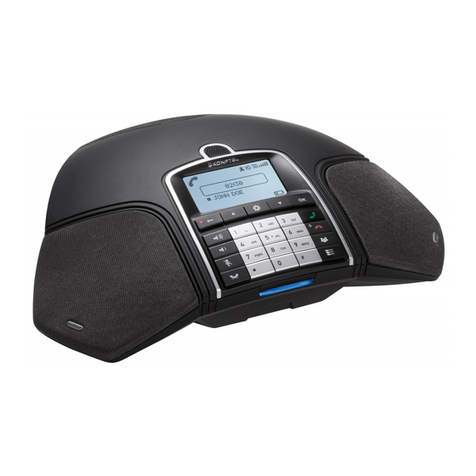
Konftel
Konftel Konftel 300W Quick reference guide
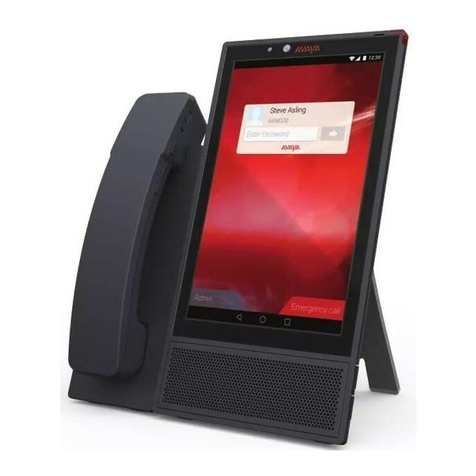
Avaya
Avaya Vantage Installing and Administering

Cisco
Cisco Conference Phone Installation
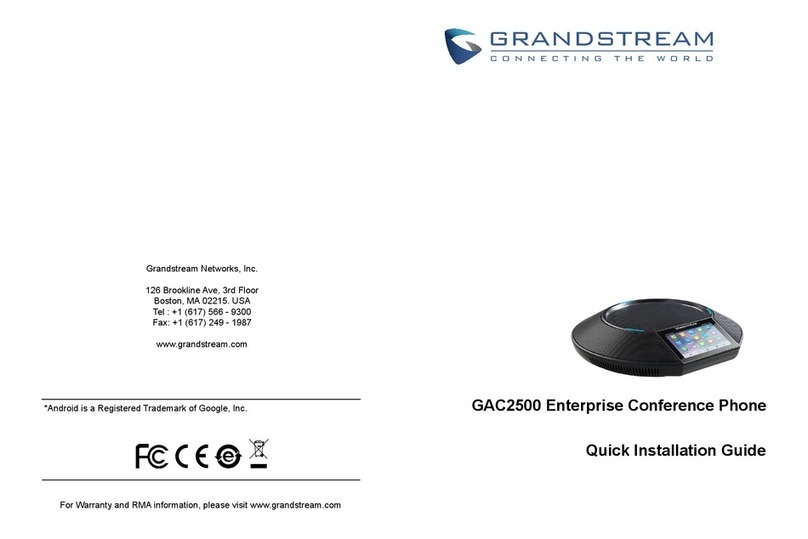
Grandstream Networks
Grandstream Networks GAC2500 Quick installation guide
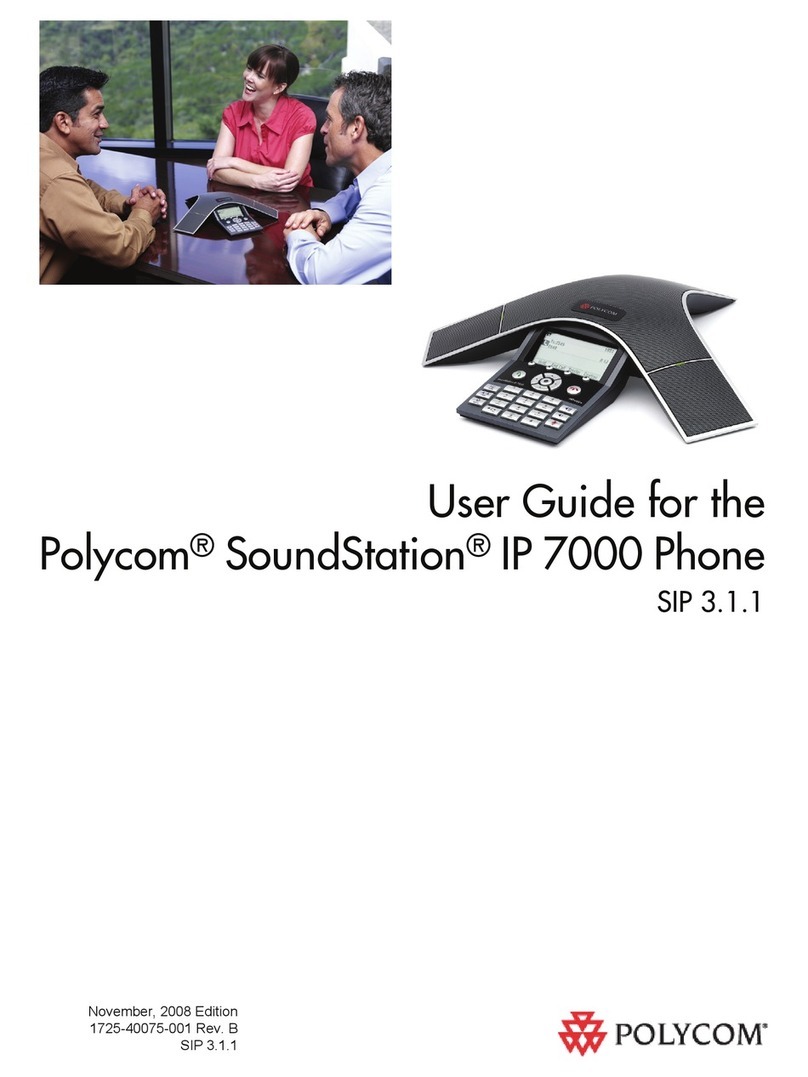
Polycom
Polycom SoundStation IP 7000 user guide
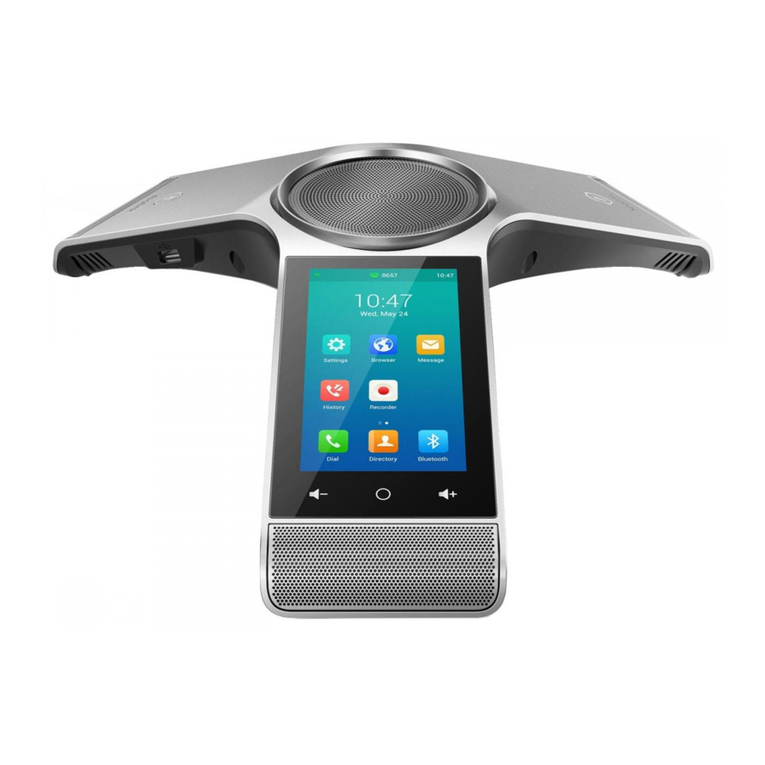
Yealink
Yealink One Talk CP960 quick start guide
